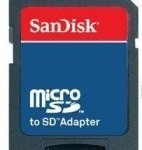 Very recently I was thinking of trying FreeBSD operating system on a laptop as a desktop system. FreeBSD is an excellent UNIX class of operating systems primarily used as a server on internet. Among other things the operating system posses excellent memory management features, ZFS and LLVM etc.
Very recently I was thinking of trying FreeBSD operating system on a laptop as a desktop system. FreeBSD is an excellent UNIX class of operating systems primarily used as a server on internet. Among other things the operating system posses excellent memory management features, ZFS and LLVM etc.
I have installed various BSD class of operating systems earlier also, but when I installed FreeBSD 9.1 this time, I noticed that the default disk partitioning options have changed in the installer. By default if the automatic partitioning option is chosen, FreeBSD creates GPT (GUID Partition Table). I decided to proceed with all default options except the timezone settings were changed to IST.
At the end of the install, the system refused to boot from the hard disk. I thought this is because the BIOS may be configured to use the UEFI (Unified Extensible Firmware Interface) being configured in BIOS as the laptop had windows 7 installed in it. I tried changing the setting to – disable, EUFI/legacy, legacy – but still the laptop did not boot. Upon my research on the internet I came across – https://wiki.freebsd.org/UEFI. Here it was mentioned that –
Partitions not seen. When using GPT, FreeBSD will create a protective MBR. This MBR has one partition entry covering the whole disk. FreeBSD marks this partition active. This causes at least some UEFI implementations to ignore the GPT. To fix this the partition needs to be marked inactive. This should be fixed as of r251588, to be confirmed.
Running
fdisk /dev/sda0
from the live mode in FreeBSD confirmed that there is an MBR partition created and the flag 80 (active) has been set on it. I booted from a linux CD and ran
fdisk -l /dev/sda0
to confirm that this is indeed the case. So I used linux fdisk to remove the active flag (toggle option), but this did not help me.
At this moment I decided to drop this issue here and take the easy way out in order to get the operating system installed. During the installation this time I chose manual partitioning –
- deleted all partition
- changed the partitioning scheme to MBR (the default was GPT)
- created a FreeBSD partition on it with further two partitions (slices) within the FreeBSD disk area
- one as type freebsd-swap
- other freebsd-ufs (mounted at /).
During the end of the installation an option to go to shell for additional installation is provided. I selected that option and then ran the
sysinstall
utility and selected options as follows –
sysinstall -> Configure -> Packages -> FTP -> Main Site
Selected all the desired software and finished the installation. The reboot took me straight to FreeBSD.
Enabling UTF-8
The available locales can be checked using the locale command. In order to find out the UTF-8 locale which are installed –
# locale -a | grep UTF-8|grep US
en_US.UTF-8
In order to add the support for this locale, following lines need to be added in /etc/login.conf –
:charset=UTF-8:\
:lang=en_US.UTF-8:
Finally run the –
#cap_mkdb /etc/login.conf
Now in order to use these following two environment variables can be set –
LANG=en_US.UTF-8
GDM_LANG=en_US.UTF-8
Installing X windows and Windows Managers
Since I wanted to get a graphical desktop on the laptop, I need to install X windows, a window manager and some other graphical tools like browser etc.
# pkg_add -r x11 ratpoison awesome stumpwm firefox
Configuring X and starting is done as below –
# X -configure
# cp /root/xorg.conf.new /etc/xorg.conf
# cat ~/.xinitrc
export LC_ALL=en_US.UTF-8
export LANGUAGE=en_US.UTF-8
export LANG=en_US.UTF-8
exec /usr/local/bin/ratpoison
Following two lines needs to be added to
/etc/rc.conf
for the X to work correctly –
hald_enable="YES"
dbus_enable="YES"
and then finally
startx
to launch the X. May be later on I will install one of the display managers to facilitate graphical login.
So I am ON with freebsd and now I can start learning/exploring this further and may be try some of the other BSDs along with this as multiboot. I have not really worked on BSDs from quite sometime. I expect this to be a good refresher.
Like this:
Like Loading...






